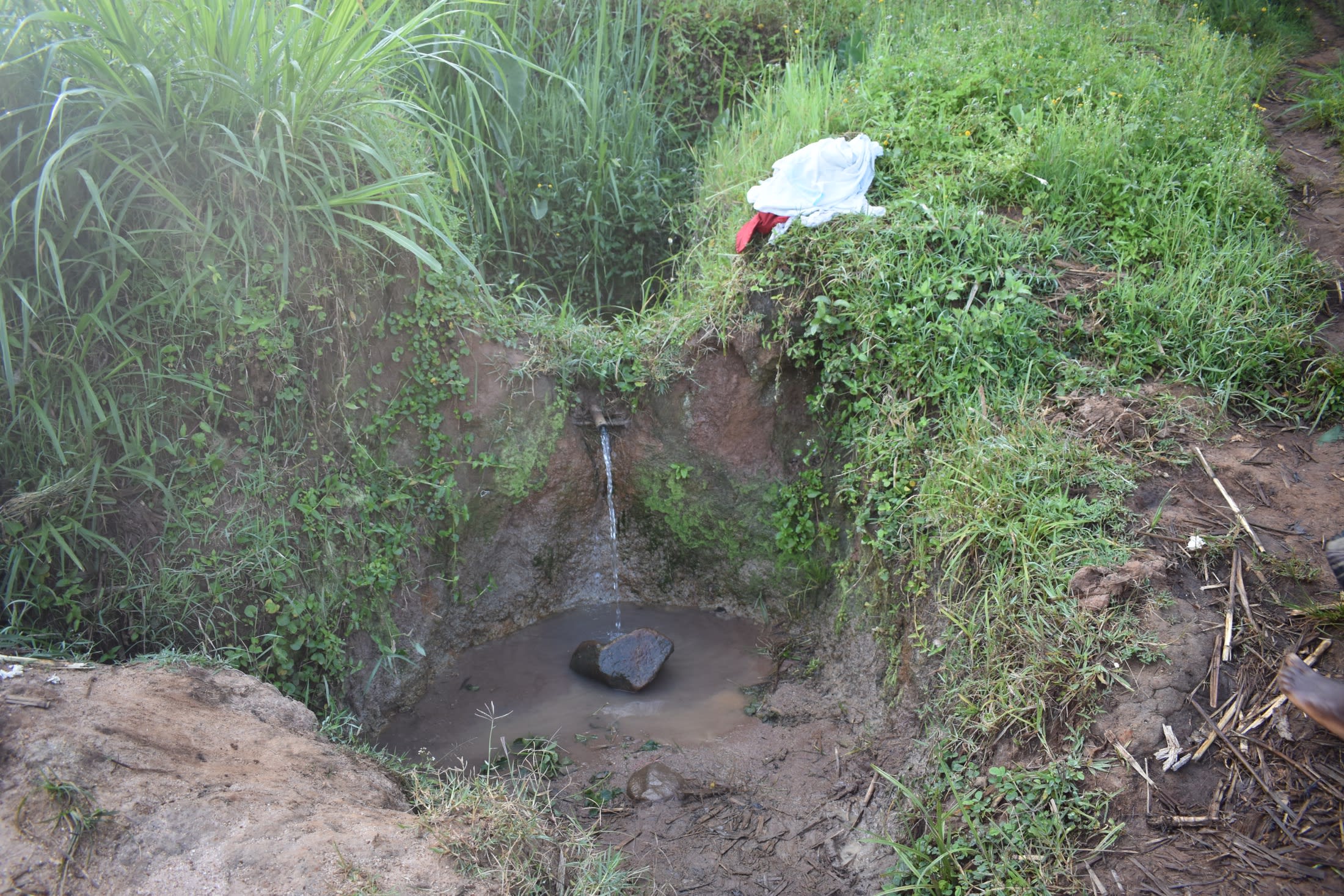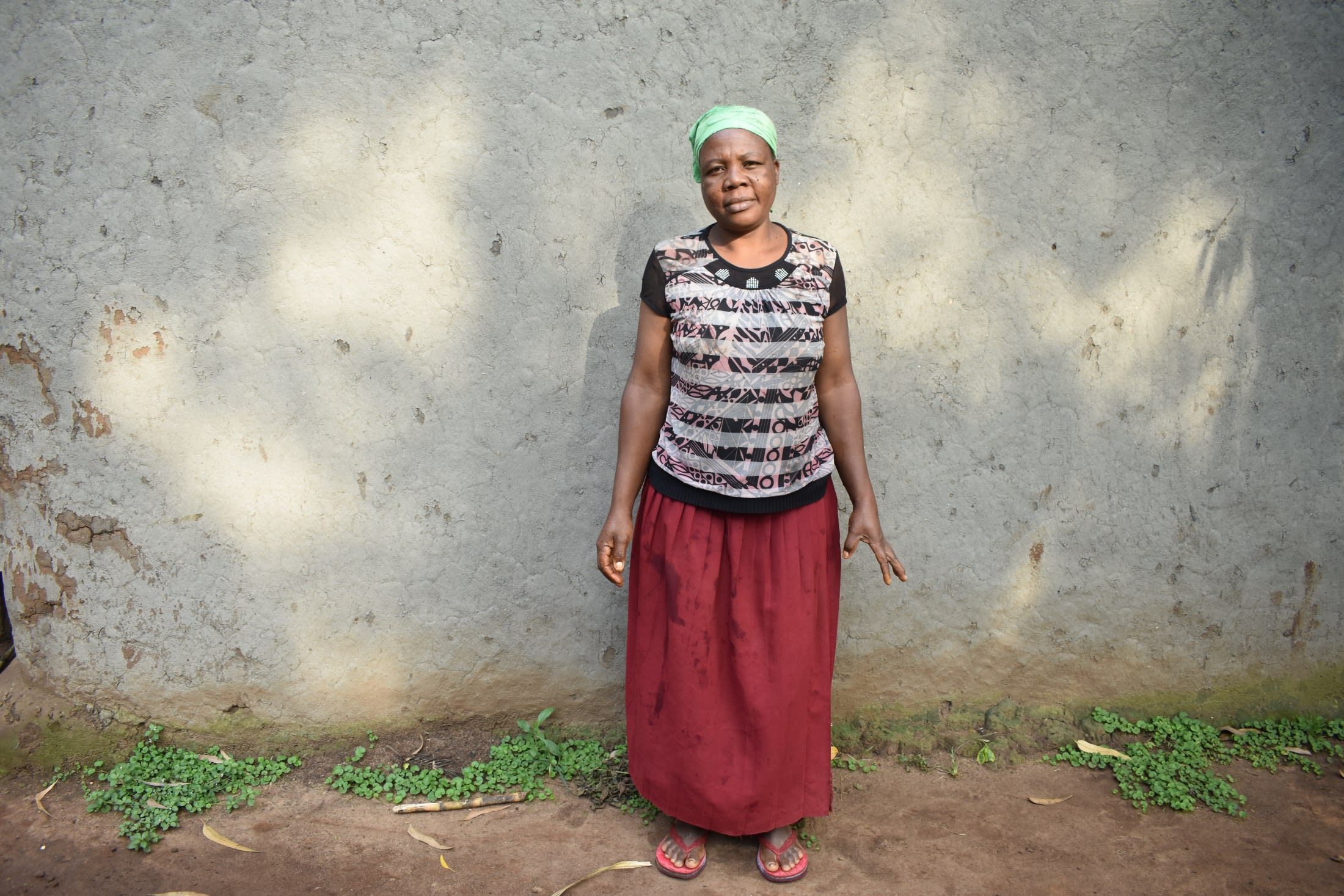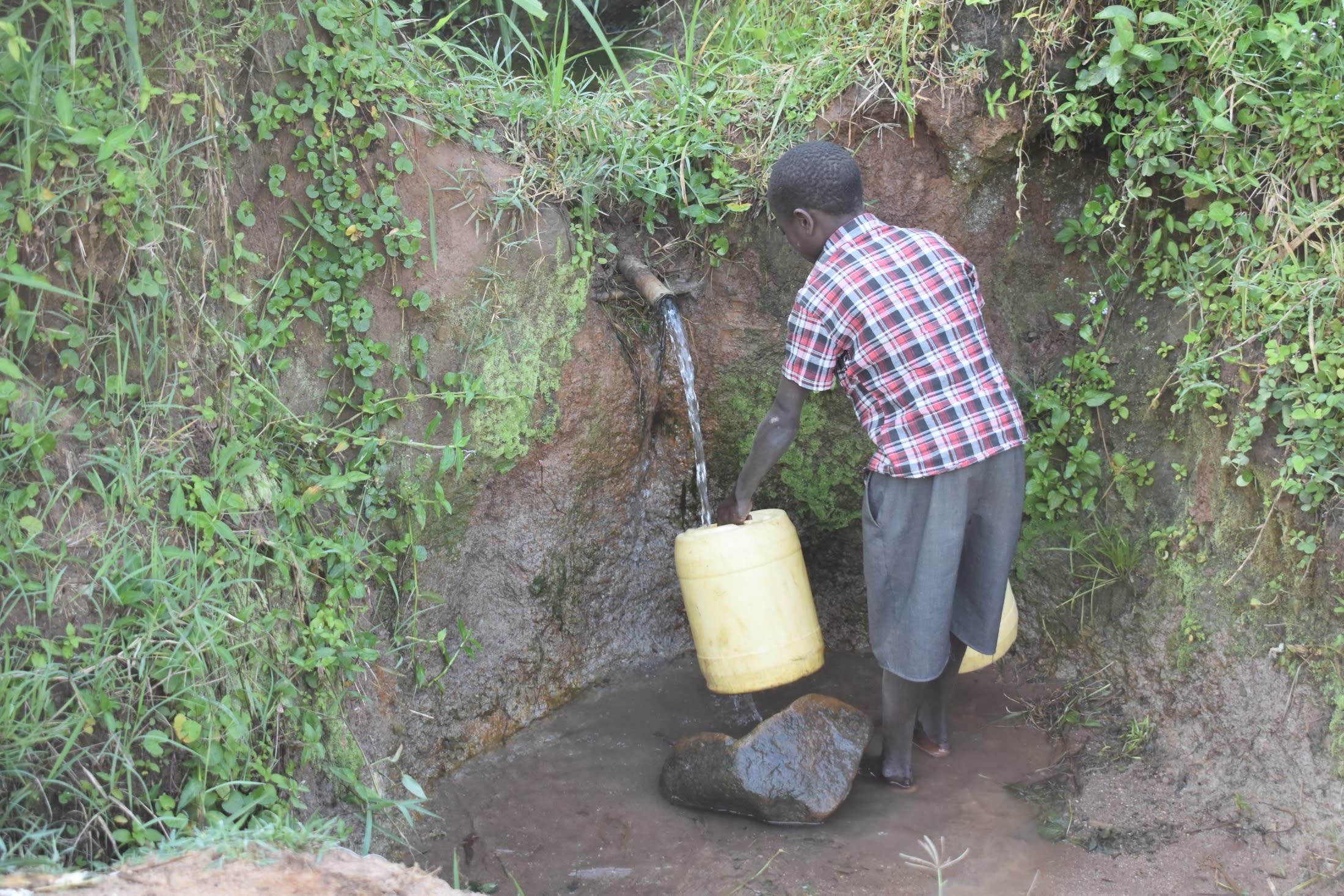Absula Spring is the primary water source for the people living in this area of Isongo Community, but it is rudimentary and only provides unsafe water for the 210 community members here.

But collecting water here to meet their daily needs is not easy or quick and wastes people's time that they should be using to do other essential tasks.
The community has inserted an improvised collection pipe into a grassy earth bank from where the water flows. To collect water, people must climb down into the muddy area where there is a small pool of water and balance their collection container on a rock under the spout so water can trickle into the container. Then they must carefully climb back up the bank and carry their jugs of water home.
Since the spring is unprotected and open to contamination from humans and animals alike, the collected water is unsafe and has left many community members suffering from water-related illnesses as a result. And their valuable resources of time and finances to seek treatment are being wasted.

"Children come to the spring from school, [and] throw sugarcane remains in the water. When I come to fetch it, I have to wait for it to settle. This has always had a negative impact on my personal schedule," said 47-year-old farmer Felisters Andieri (shown above).
"Being the only reliable and cheap source of water for the residents of this particular area, it has attracted a very huge number of users who fetch water," said our field officer Protus Ekesa.
"When [I] am sent to the spring, I have always gotten late to school because I found very many people at the spring," said 14-year-old Colvas M., shown below collecting water.

"The challenge that this population has is that they do not have enough resources to enable them to protect the spring. They are therefore looking for anyone of goodwill to come and give them a push so that they can be able to have access to clean and safe water," concluded Protus.
What We Can Do:
Spring Protection
Protecting the spring will help provide access to cleaner and safer water and reduce the time people have to spend to fetch it. Construction will keep surface runoff and other contaminants out of the water. With the community's high involvement in the process, there should be a good sense of responsibility and ownership for the new clean water source.
Fetching water is a task predominantly carried out by women and young girls. Protecting the spring and offering training and support will, therefore, help empower the female members of the community by freeing up more of their time and energy to engage and invest in income-generating activities and their education.
Training on Health, Hygiene, and More
To hold training, we work closely with both community leaders and the local government to approve small groups to attend training. We ask community leaders to invite a select yet representative group of people to attend training who will then act as ambassadors to the rest of the community to share what they learn.
The training will focus on improved hygiene, health, and sanitation habits in this community. We will also have a dedicated session on COVID-19 symptoms, transmission routes, and prevention best practices.
With the community's input, we will identify key leverage points where they can alter their practices at the personal, household, and community levels to affect change. This training will help to ensure participants have the knowledge they need about healthy practices and their importance to make the most of their water point as soon as water is flowing.
Our team of facilitators will use a variety of methods to train community members. Some of these methods include participatory hygiene and sanitation transformation, asset-based community development, group discussions, handouts, and demonstrations at the spring.
One of the most important issues we plan to cover is the handling, storage, and treatment of water. Having a clean water source will be extremely helpful, but it is useless if water gets contaminated by the time it is consumed. We and the community strongly believe that all of these components will work together to improve living standards here, which will help to unlock the potential for these community members to live better, healthier lives.
We will then conduct a small series of follow-up trainings before transitioning to our regularly scheduled support visits throughout the year.
Training will result in the formation of a water user committee, elected by their peers, that will oversee the operations and maintenance of the spring. The committee will enforce proper behavior around the spring and delegate tasks that will help preserve the site, such as building a fence and digging proper drainage channels. The fence will keep out destructive animals and unwanted waste, and the drainage will keep the area's mosquito population at a minimum.





 Protected Spring
Protected Spring
 Rehabilitation Project
Rehabilitation Project
































